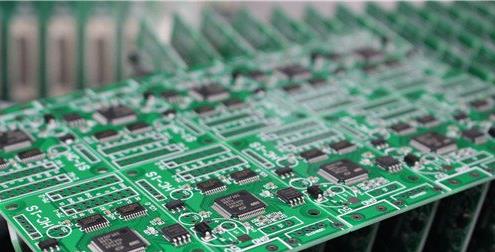The performance of PCB boards will be affected by many external or environmental factors, such as moisture, extreme temperature, salt spray and chemical substances. The protective coating is a polymer film coated on the surface of the PCB to protect the PCB and its components from corrosion and environmental pollution.
By preventing the influence of contaminants and environmental factors, the protective coating can prevent corrosion of conductors, solder joints and lines. In addition, it can also play a role in insulation, thereby reducing the impact of thermal and mechanical stress on the components.
Protective coatings are an important part of printed circuit boards. The thickness is usually between 3-8 mils (0.075-0.2 mm). It is widely used in aerospace, automotive, military, marine, lighting, consumer electronics and industrial industries.

Types of PCB protective coating
According to the chemical composition, protective coatings can be divided into five types, namely acrylic, epoxy, polyurethane, silicone and p-xylene. The choice of a specific coating is based on the PCB's application and electronic requirements. Only by choosing appropriate materials can the PCB be effectively protected.
Acrylic protective coating:
Acrylic resin (AR) is a preformed acrylic polymer that is dissolved in a solvent and used to coat the surface of PCB. Acrylic protective coatings can be brushed by hand, sprayed or dipped into acrylic resin coatings. This is the most commonly used protective coating for PCBs.
What are the types of protective coatings for PCB boards?
Polyurethane protective coating:
The polyurethane (UR) coating has excellent protection against the effects of chemicals, moisture and abrasion. Polyurethane (UR) protective coatings are easy to apply but difficult to remove. It is not recommended to repair it directly by heat or soldering iron, because it will release toxic gas isocyanate.
Epoxy resin (ER type):
Epoxy resin has excellent shape retention properties in harsh environments. It is easy to use, but will damage the circuit when it is disassembled. Epoxy resin is usually a two-component thermosetting mixture. One-part compounds are cured by heat or ultraviolet radiation.
Silicone (SR type):
Silicone (SR type) protective coatings are used in high temperature environments. This kind of coating is easy to apply and has low toxicity, and has anti-wear and moisture-proof effects. Silicone coatings are one-component compounds.
Paraxylene:
The paraxylene coating is applied to the PCB using a chemical vapor deposition process. Paraxylene becomes a gas when heated, and after the cooling process, it is put into the chamber where it polymerizes and becomes a thin film. The film is then coated on the surface of the PCB.
PCB protective coating selection guide
The type of conformal coating depends on the thickness of the coating required, the area to be covered, and the degree of adhesion of the coating to the board and its components.
How to apply conformal coating to PCB boards?
.Hand painting with a brush
.Hand-painted with aerosol
.Use an atomizing spray gun for manual spraying
.Automatic dip coating
.Use selective coater